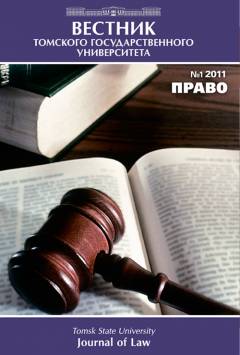The problem of classification of investigative actions
The complexity of the investigation process implies the existence of a wide range of instruments promoting the achievement of significant tasks in the sphere of criminalistics. Being such instruments, the investigative actions can be grouped in several similar blocks. The classification of investigative actions still remains one of the problems in criminalistics. Unfortunately, most of the well-known classifications have a clear procedural nature or are self-contradictory. In fact, the researchers recognize only two tactic and criminalistics classifications of investigative actions: 1. The classification according to the purpose of an investigative action includes the investigative actions aimed at the obtaining of evidence and those aimed at operating by the obtained evidence to check them. Due to its abstractness such a classification has a theoretical value for criminalistics tactics but not a practical one. 2. The classification of investigative actions according to the methods of reflecting the factual data includes 3 groups: the group of investigative actions based on the interrogation method; the group of investigative actions based on the observation method and the group of investigative actions based on a combination of interrogation and observation.. Taking into account a pragmatist nature of criminalistics tactics as a section that accumulates the information about investigative actions, it is practicable to classify investigative actions according to a substantive aspect of their priority activity. Thus, we can point out: 1. Communicative investigative actions including interrogation and face-to-face confrontation. A noteworthy detail is that interrogation is the most common form of investigative actions. 2. Search investigative actions including investigative examination (crime scene examination, examination of material evidence, view of corpse), certification, search and seizure. 3. Experimental investigative actions involve investigative experiment, identification, field verification of testimonies. Sometimes this group of investigative actions is called a mixed one. 4. Research investigative actions including expert examination (though it is challenging from tactics viewpoint) and research by specialists. By virtue of the fact that national criminalists has a negative tendency to complicate simple things, the names of the groups above have a narrow interpretation but not a broad one.
Keywords
следственные действия, классификация, уголовно-процессуальная природа, investigative actions, classification, criminal procedural natureAuthors
| Name | Organization | |
| Akhmedshin Ramil L. | Tomsk State University | ramil_ahmedshin@mail.com |
References

The problem of classification of investigative actions | Tomsk State University Journal of Law. 2016. № 4(22). DOI: 10.17223/22253513/22/3